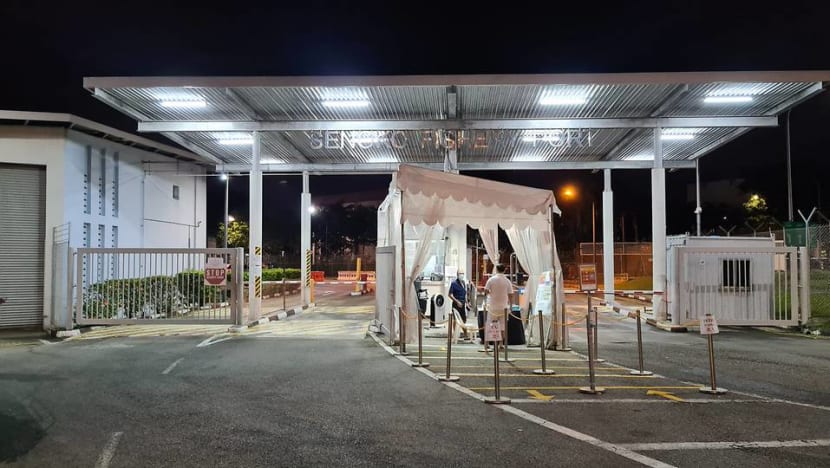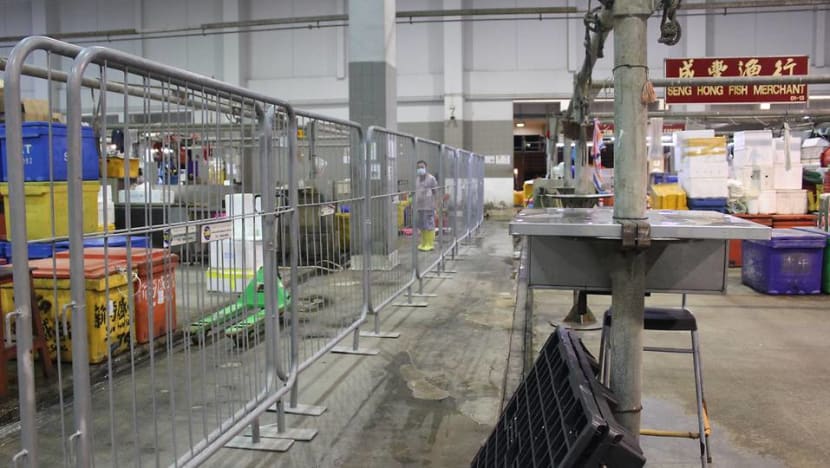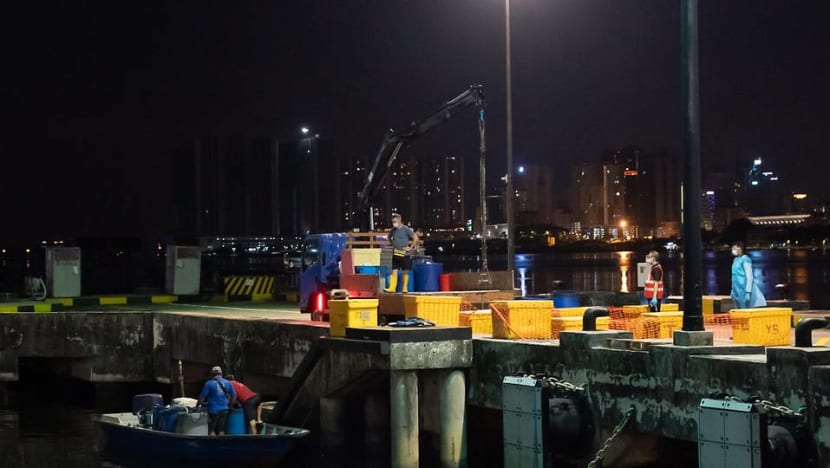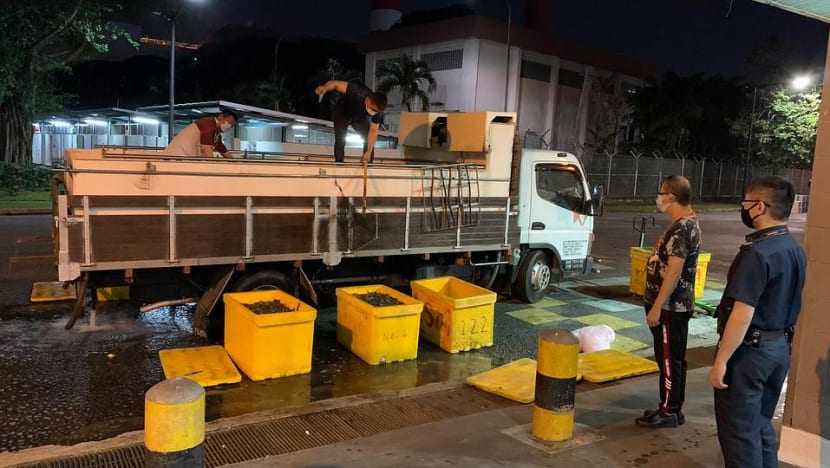Jurong, Senoko fishery ports to get enhanced COVID-19 safe management measures
SINGAPORE: Enhanced safe management measures, such as restricting access to the marketplace as well as mandatory testing for those entering the ports, will be implemented at Singapore's two fishery ports, Jurong and Senoko.
It comes after the Singapore Food Agency's (SFA) investigation into how COVID-19 transmission could have occurred at Jurong Fishery Port, which has become the country's largest infection cluster.
READ: Jurong Fishery Port cluster: No evidence of COVID-19 transmission through contaminated fish, says MOH
In a press release on Wednesday (Jul 28), SFA outlined enhanced measures in three areas - the entrance, marketplace, as well as the wharf and unloading areas of the fishery ports.
At the entrance, all authorised entry pass holders will now be required to undergo testing prior to entry, before they transition to a seven-day rostered routine testing regime. Those who do not undergo testing or do not have negative test results will not be allowed to enter the fishery ports.
All foreign delivery drivers must remain in their vehicles for SafeEntry check-in and temperature taking instead of alighting, so as to reduce intermingling.


SFA said access into the marketplace will be restricted, including limiting the number of seafood traders within the premises at any time. Tenants and workers will be segregated into groups and should not mingle.
They will have separate toilet facilities, as well as meal and smoking areas to reduce intermingling, the press release said.
The agency said surveillance will be stepped up, adding that firm enforcement action will be taken against those who breach safe management measures.
READ: MPs raise questions on Jurong Fishery Port, Sinovac, differentiated measures for fully vaccinated people
At the wharf and unloading area, measures will be taken to further reduce contact. Since March last year, foreign fishing crews have not been allowed to land, while foreign delivery drivers have been limited to the demarcated areas for unloading or collection of containers. Interaction between fishery port personnel and foreign individuals have been limited to the unloading of goods.


Under the enhanced measures, all unloading activity will now be supervised by safe distancing ambassadors and will also be monitored via CCTV. Fish containers, such as boxes or crates, will be disinfected prior to collection, and workers must keep their distance as foreign workers unload the goods.
SFA said the goods can only be picked up after the foreign workers move away from the demarcated unloading area. All workers will be required to adhere to a hand hygiene and sanitation regime, and must wear their masks and gloves when they pick up the goods, it said.
During her visit to Senoko Fishery Port on Wednesday, Sustainability and the Environment Minister Grace Fu urged stakeholders in the food supply chain, including trade visitors and workers at the port, to observe the enhanced measures.
“We want Senoko Fishery Port to be a safer place from a public health point of view, because it’s such an important part of our food supply chain,” said Ms Fu.
“A cluster here will inundate the facility and it will also, possibly, put our community at risk.”
CUSTOMISED MEASURES FOR JURONG FISHERY PORT
While both fishery ports are distribution hubs, SFA acknowledged that there are unique differences in the sites that may require customised safe management measures.
For instance, larger fishing vessels tend to offload at Jurong Fishery Port. To limit interaction with foreign fishing crew, there will be dedicated workers operating forklifts or cranes within the wharf area to move seafood from the vessels to the gates for collection by fishery port workers, it said.
SFA said Jurong Fishery Port will reopen on Saturday for tenants to return and make arrangements for the resumption of operations. They will be briefed on the enhanced measures and SFA will work with the industry to facilitate strict compliance.
The agency said that unloading and wholesale activities will be allowed to resume on Aug 2, adding that it has conducted two rounds of deep cleaning of the entire site, including disinfecting the tenants’ offices, since the temporary closure of Jurong Fishery Port.
Common areas and crates will continue to be cleaned regularly when Jurong Fishery Port reopens, said SFA.
BOOKMARK THIS: Our comprehensive coverage of the COVID-19 pandemic and its developments
Download our app or subscribe to our Telegram channel for the latest updates on the coronavirus outbreak: https://cna.asia/telegram












